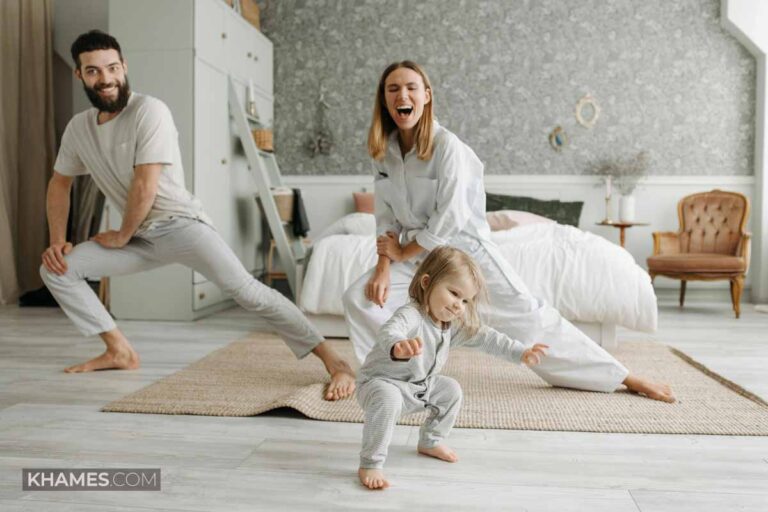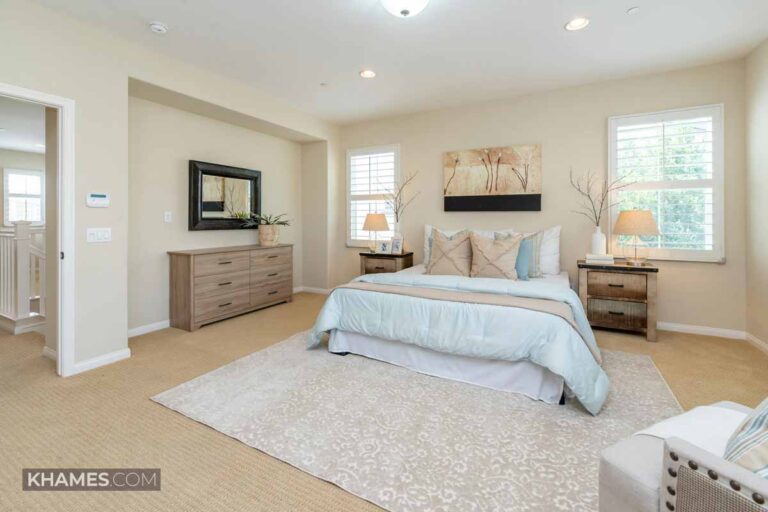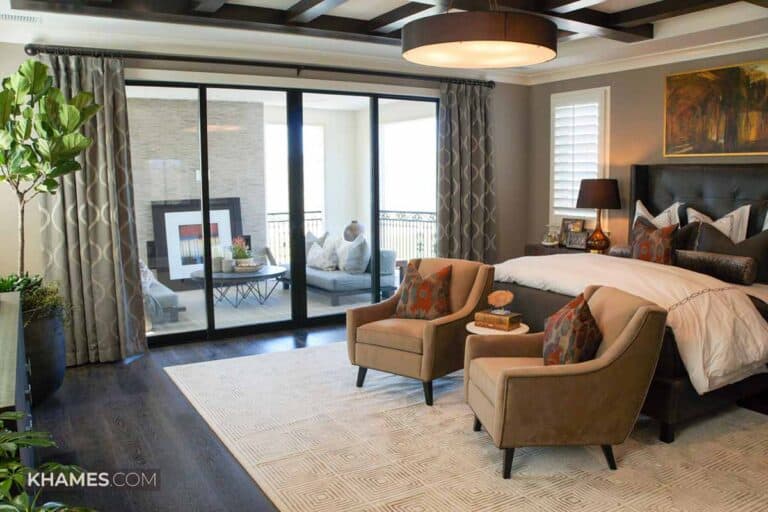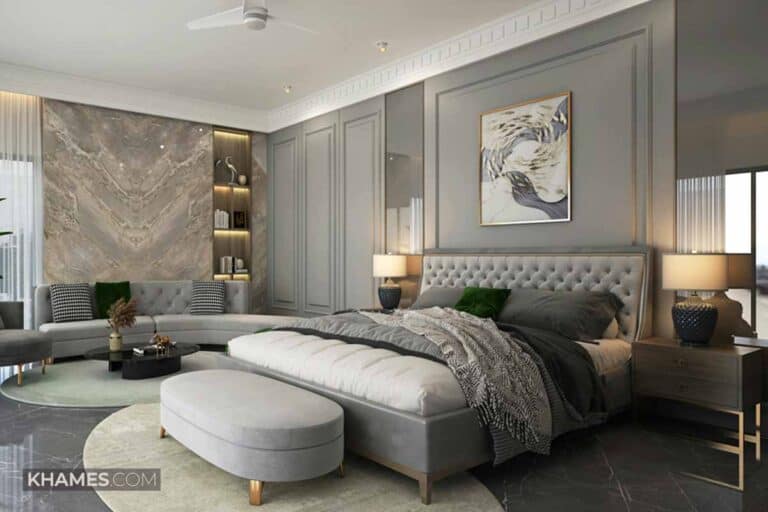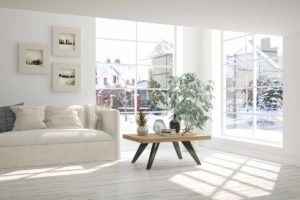When you think about the ideal bedroom size for you and your family, there are many factors that need to be considered, as the quest for the perfect bedroom size is more than a matter of square footage; it’s about crafting spaces that reflect and accommodate the unique needs, aspirations, and dynamics of each family member.
Join us as we delve deeper into why bedroom size matters significantly more than one might initially think—especially when it comes to nurturing familial bonds under one roof.
Understanding Bedroom Size Importance
When we consider the essence of a bedroom, it’s not just a place where we end our day; it’s a sanctuary where comfort meets personal expression. The size of this space plays an unsung role in how effectively it serves its purpose, influencing everything from the quality of rest to the room’s versatility and aesthetic appeal. Undoubtedly, navigating through average bedroom sizes can offer an enlightening compass for anticipating your needs and shaping your haven with precision.
In delving into standard versus master bedroom dimensions, we uncover more than just numbers – it’s about mapping lifestyles onto spaces. A well-proportioned bedroom size embraces both functionality and creativity, allowing for essential furniture while granting freedom for personalized touches that transform these quarters from mere sleeping areas to realms of relaxation and reflection.
It’s a dynamic blueprint that adapts to phases of life, reflecting changes in preferences or family size without compromising on comfort or style. Thus, understanding bedroom size importance is fundamental in crafting living spaces that echo our identity and meet our evolving demands with grace.
Standard Bedroom
Diving into the dimensions of a standard bedroom offers an interesting perspective on how our living spaces have evolved. Traditionally, these bedrooms measure around 132 square feet in the United States, a size that comfortably accommodates a full-sized bed with ample room for nightstands and a dresser.
However, this one size fits all approach is gradually shifting as architects and homeowners alike experiment with space efficiency and innovative design concepts. This evolution reflects not just changing aesthetic preferences but also a deeper understanding of personal space as an extension of one’s lifestyle and personality.
The average size mentioned above might seem adequate at first glance, but it’s essential to consider how multifunctional our bedrooms have become. Today’s standard bedroom is not merely a place to rest; it has transformed into a sanctuary where people often work, exercise, or unwind with leisure activities like reading and meditating.
This shift has sparked intriguing discussions among designers about reimagining bedroom spaces that prioritize comfort, functionality, and well-being over traditional metrics of square footage. Through this lens, the average dimensions become more than just numbers—they represent the canvas on which individuals paint their unique expressions of home.
Standard Bedroom Size:
A standard bedroom is a more standard-sized room. Unlike the master bedroom, the only purpose of a typical bedroom is to sleep.
The minimum size of a bedroom is 10 x 12 feet.
Here’s what you can expect in a standard bedroom:
Comfortable sleeping area with a twin, full, queen, or king-sized bed, closet or wardrobe.
Master Bedroom
Delving into the realm of master bedrooms, we uncover a fascinating spectrum of dimensions that cater to diverse needs and desires. Typically, the average size of a master bedroom in the United States spans between 300 to 350 square feet.
This spacious layout not only allows for a king-sized bed to rest comfortably as its centerpiece but also provides ample room for additional furniture like dressers, nightstands, and perhaps even a cozy reading nook by the window. The luxury of space in these sanctuaries offers an unrivaled canvas for personal expression through design and decor.
What’s intriguing is how these dimensions shift when considering global perspectives. In European countries, where space can be at a premium, master bedrooms often lean towards functionality rather than expansiveness, embodying efficient designs within tighter spaces that might hover around 200 square feet.
This contrast illuminates an essential truth: the essence of a master bedroom isn’t solely measured by its square footage but by how it embraces its occupants’ lifestyles and aesthetic values. Whether echoing minimalistic serenity or opulent comfort, each master bedroom tells a story beyond mere size—a narrative shaped by those who retreat there day after day.
Master Bedroom Size:
A master bedroom is typically the largest and most luxurious sleeping area in a home.
It’s not only for sleeping purposes, so design it to be a peaceful and comfortable retreat, a haven where you can relax and unwind after a long day.
The minimum size of a master bedroom is 14 x 16 feet.
Here’s what you can expect to find in a master bedroom:
- A king or queen-sized bed
- Seating area with one or two chairs 1’6″ (45 Centimeters) X 1’6″ (45 Centimeters) — Each
- one dresser 3 ft 6 in (105 cm) × 1 ft 10 in (55 cm)
- Closet or wardrobe space 5 ft (152 cm)
- Two-night tables
- Possibly a small desk or a table 1 ft 6 in (45 cm) × 3 ft 0 in (90 cm)
- One storage unit with drawers 2 ft 6 in (75 cm) × 1 ft 10 in (55 cm)
- One Crib (Optional): 2 ft 4 in (70 cm) x 1 ft 5 (45 cm)
Key Differences Between Standard and Master Bedrooms
| Type of Bedroom | Typical Bedroom Size (in feet) | Typical Bedroom Area (in square feet) | Typical Bedroom Size (in meter) | Typical Bedroom Area (in meter) |
|---|---|---|---|---|
| Master Bedroom | 14 x 16 | 224 | 4.27 x 4.88 | 20.84 |
| Secondary Bedroom | 10 x 12 | 120 | 3.05 x 3.66 | 11.16 |
| Guest Bedroom | 10 x 12 | 120 | 3.05 x 3.66 | 11.16 |
| Kids’ Bedroom | 10 x 10 | 100 | 3.05 x 3.05 | 9.30 |
| Average Bedroom | Approx. 11.5 x 11.5 | Approx. 132 | Approx. 3.50 x 3.50 | Approx. 12.25 |
Nestled in the heart of our homes, bedrooms are sanctuaries where the day’s worries dissipate and tranquility reigns. Yet, when it comes to distinguishing between standard and master bedrooms, nuances in features and functionality emerge, transforming how we interact with these spaces.
A standout difference lies in their size; while standard bedrooms offer a cozy retreat typically ranging from 100 to 200 square feet, master bedrooms sprawl luxuriously over 200 square feet, offering ample room for not just a bed but often a suite bathroom and walk-in closets.
But the variances extend beyond mere dimensions. Master bedrooms frequently bask in architectural privileges such as higher ceilings or access to outdoor spaces like balconies or terraces – elements that elevate them from merely being larger sleeping quarters to becoming hedonistic havens within our homes.
Additionally, these rooms often revel in superior lighting options, with larger windows or even skylights inviting natural light to dance across expansive walls adorned with art or swathes of calming colors.
It’s this harmonious blend of form and function that sets master bedrooms apart – they’re not just places to lay our heads at night but thoughtfully designed escapes that reflect personal style and comfort preferences on a grander scale.
Maximizing Space in Any Bedroom Size
Maximizing space in any bedroom, regardless of its size, requires a blend of creativity and strategic planning. One often overlooked tactic is the use of vertical space. Think beyond traditional storage options and consider wall-mounted shelves and hanging organizers that keep floor space open while offering a home for everything from books to shoes. This approach not only declutters the room but can also introduce an element of design, turning storage solutions into decorative features.
Another game-changer in maximizing bedroom space is choosing furniture that serves multiple purposes. A bed with built-in storage can hide away linens or out-of-season clothing, reducing the need for extra furniture pieces that crowd the room. Similarly, opting for a fold-down desk or a bench that doubles as a storage chest can provide functionality without sacrificing precious square footage. These innovative solutions allow even the coziest bedrooms to feel spacious and serene, proving that with a bit of ingenuity, size doesn’t limit potential.
Conclusion: Choosing the Right Bedroom for You
Deciding on the right bedroom for you goes beyond just crunching square footage. It’s about envisioning your sanctuary—a place where every inch reflects your personal oasis. While stats and standards offer a roadmap, the essence lies in how a room elevates your daily rituals and accommodates your unique story.
Whether it’s reveling in the expanse of a master bedroom that hosts serene mornings and tranquil nights, or cherishing the coziness of a standard bedroom that whispers simplicity and warmth, your choice should mirror what truly resonates with you.
In navigating this intimate decision, remember that each space holds the potential to transform into an abode of comfort and style. Let creativity guide you in optimizing layouts, selecting functional furniture, and infusing elements that speak to your soul.
Embrace this journey not as finding just another room but as curating an extension of yourself—where every corner, every detail underscores who you are. The magic isn’t in adhering to averages but in sculpting an environment where you feel most peacefully at home.

